Defining Voice & Tone
Strategy | UX Copywriting | Research
I created a brand kit for an e-commerce drop-shipping store called The Singles Shop. The brand kit was meant to create a cohesive understanding of the brand philosophy, values, vision, and personality. I participated in a workshop (Start & Scale) to build the brand kit, but it did not include a voice and tone guide.
I chose to add a voice and tone guide to create examples of practical applications of the brand’s values, vision, and more across marketing and social platforms.


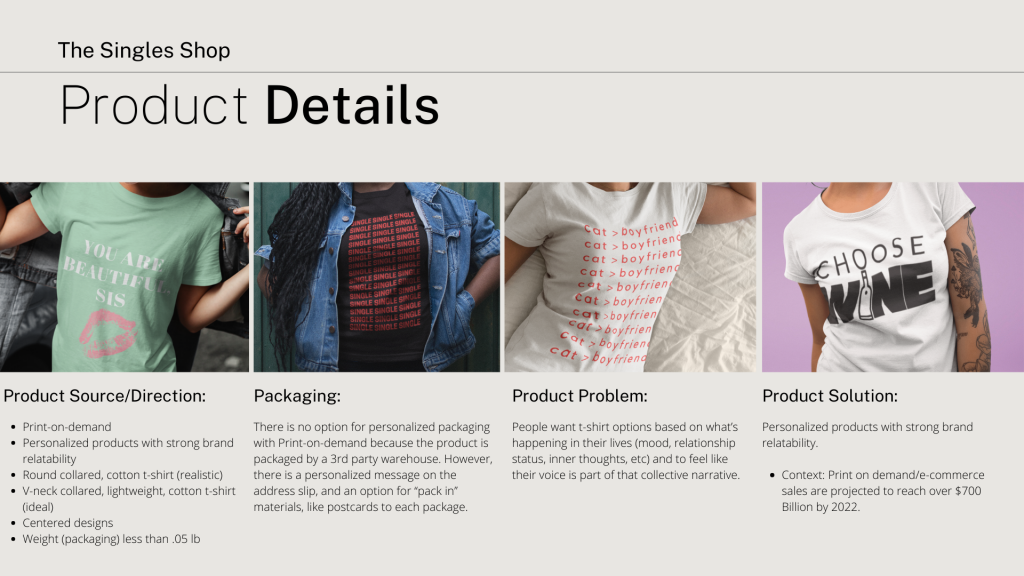
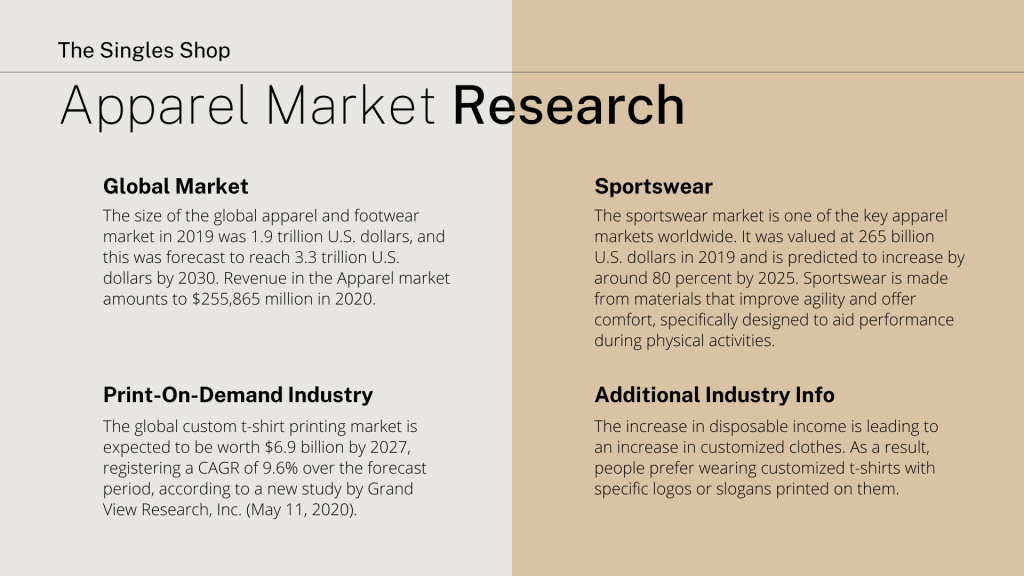
The brand kit includes definitions of the target audience, values, market research, and so much more. Tap HERE to view the full brand kit.
Problem / Statement
The company didn’t have a clear vision of what its brand was and how to communicate that to customers.
——–
How might we connect with customers to make them feel valued and seen through our brand?
Goal
- Define the brand voice and tone
- Create and set boundaries for what is acceptable among the brand’s voice and tone
- Create a consistent look and feel across different platforms and media
What I did
- Market research
- Gathered visual brand inspiration
- Assessed the company’s values, vision, etc. to translate into voice and tone guidelines
- Created visual examples of how the brand can consistently communicate with potential customers
Getting inspired
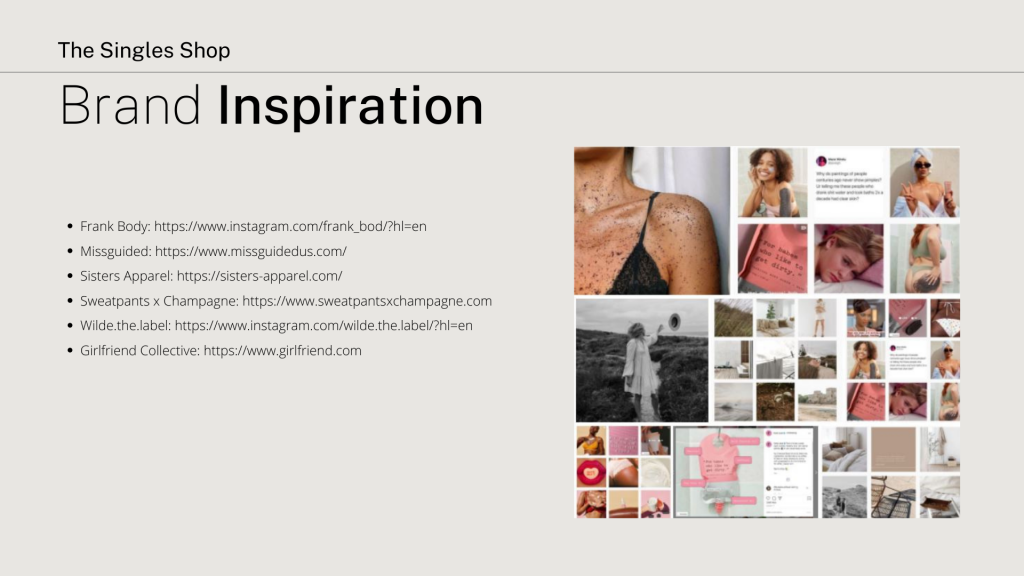
To get an idea of how the company wanted to connect with its target audience, I collected visual inspiration from brands that the company admires, follows, and regularly engages with. I collected images, posts, messages, emails, and more.
I then identified the common elements between each brand to create an inspiration board. The inspiration board was meant to be a reference while crafting the company’s desired voice and tone.
Translating the values

To create the company’s brand voice, I referred to the company’s target audience and values.
The target audience is young professional women who are currently dating and are of all shapes, sizes, and statuses.
The values emphasize being supportive, mindful, and understanding of those women’s experiences. Self-awareness and transparency are also emphasized in the company’s ideals.
From there, I defined the brand’s voice as direct, trendy, playful, and humorous.
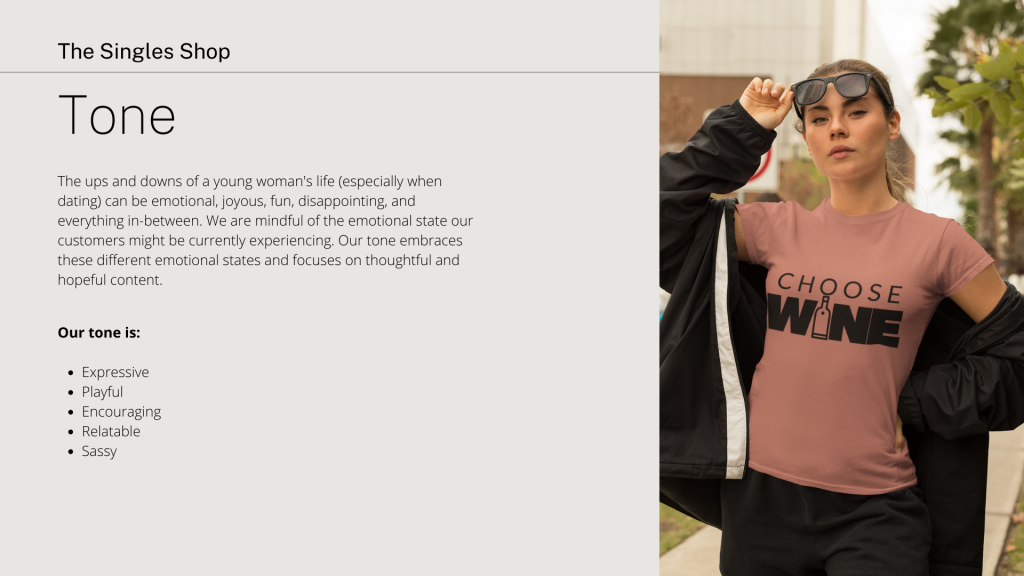
To create the company’s brand tone, I again referred to the company’s values. I also referenced the company’s personality, which is defined in the brand kit, and the keywords used to describe the desired brand image.
- Relatable
- Young
- Fun
- Modern
- Social media friendly
- Consistent
- Reliable
- Thoughtful
- Sassy
From there, I defined the brand’s voice as direct, trendy, playful, and humorous.
Creating the content
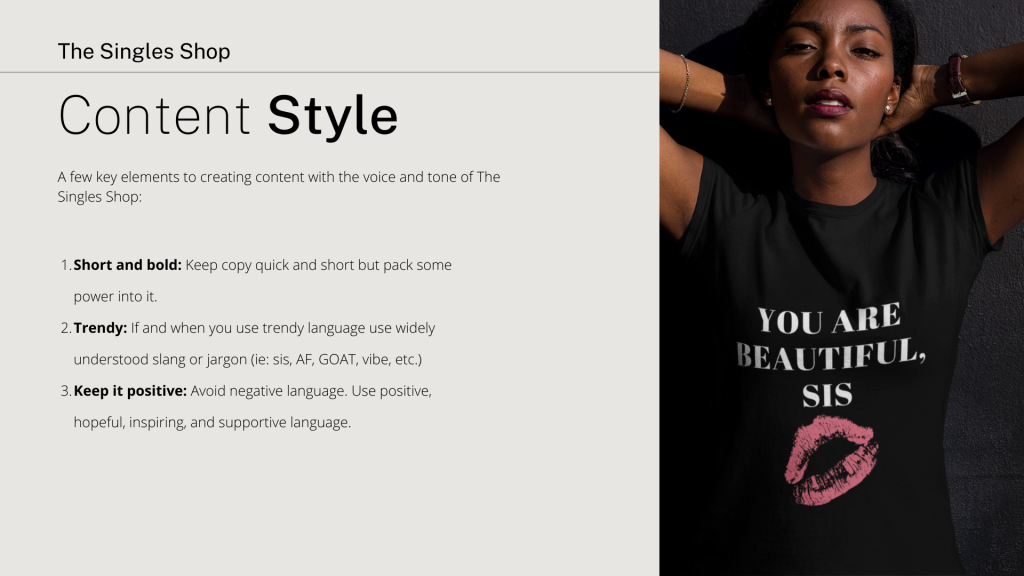
Once I defined the voice and tone of the company’s brand, I created a quick guide on how to practically use the voice and tone across different platforms. This content style guide is meant to keep the brand consistent across the board.
- The content is short and bold to reflect the brand’s direct voice.
- Using trendy language reflects the brand’s playful voice and expressive, sassy, and humorous tone.
- Using positive language reflects the company’s value of being mindful and understanding of its customers’ experiences.
Outcome: Visual Examples
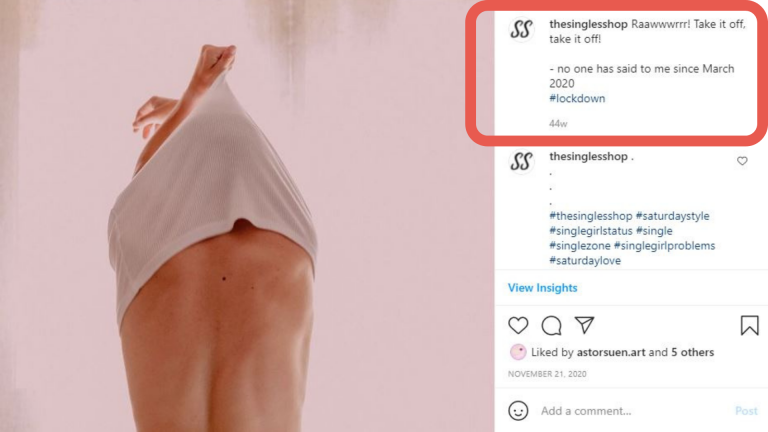
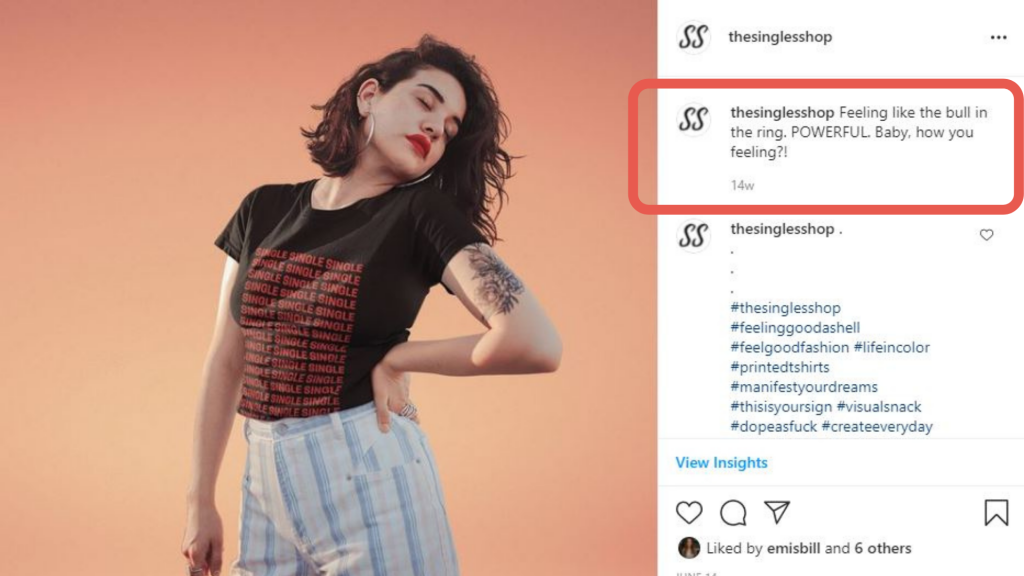
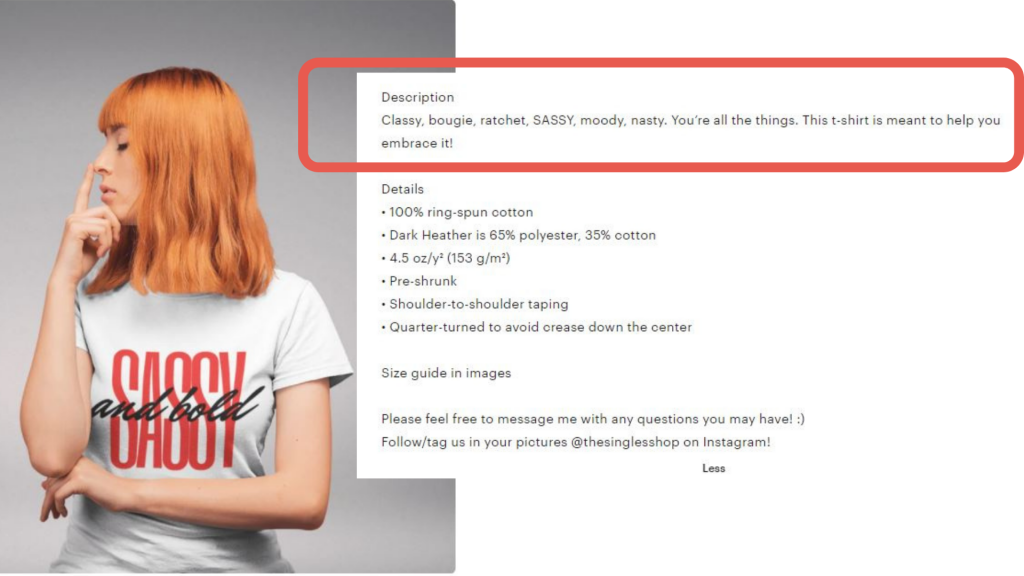
I was able to create content for social media posts, email marketing, and website product images that successfully used the voice and tone guide.
The visual example images show how I was able to use short and punchy language with humor and encouraging elements.
While crafting the voice and tone guide, I learned how to transform a company’s values into a brand personality and message.
